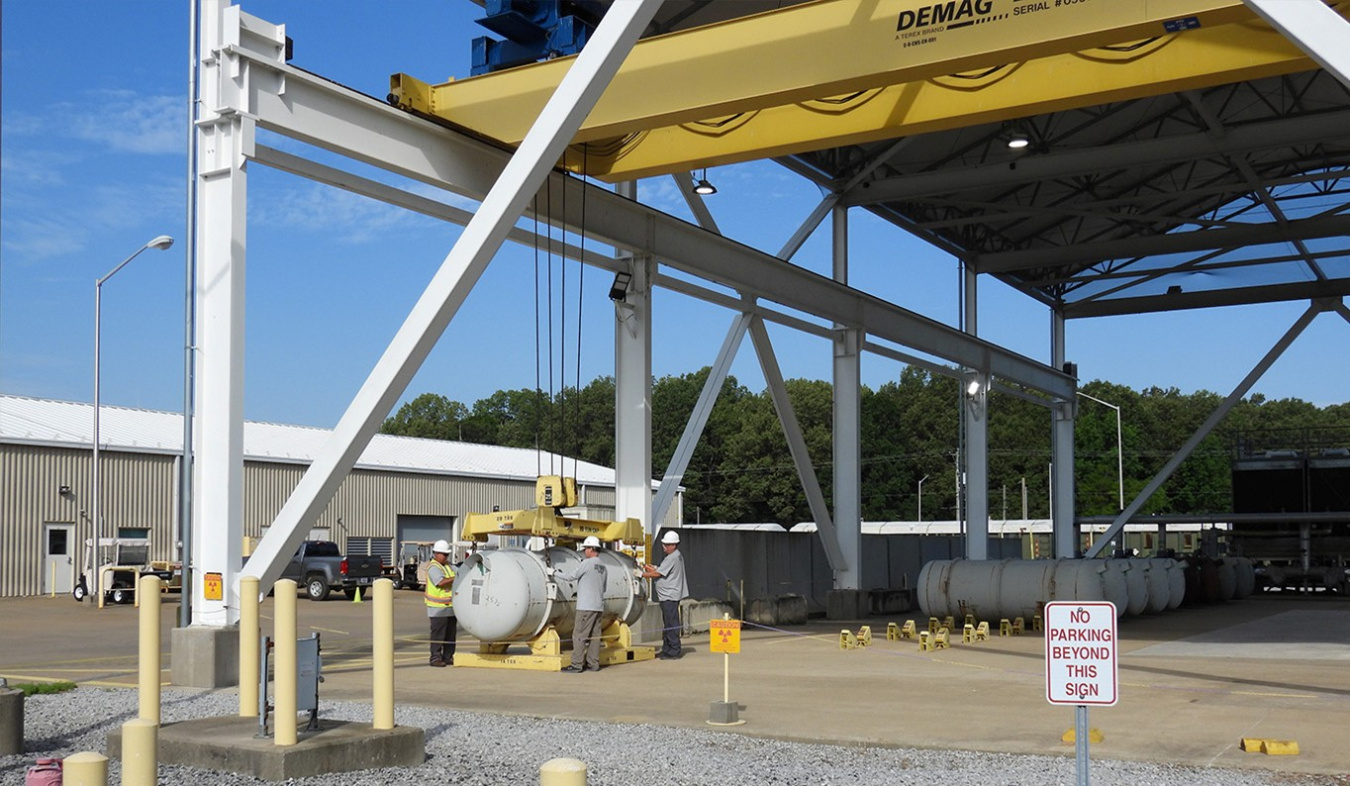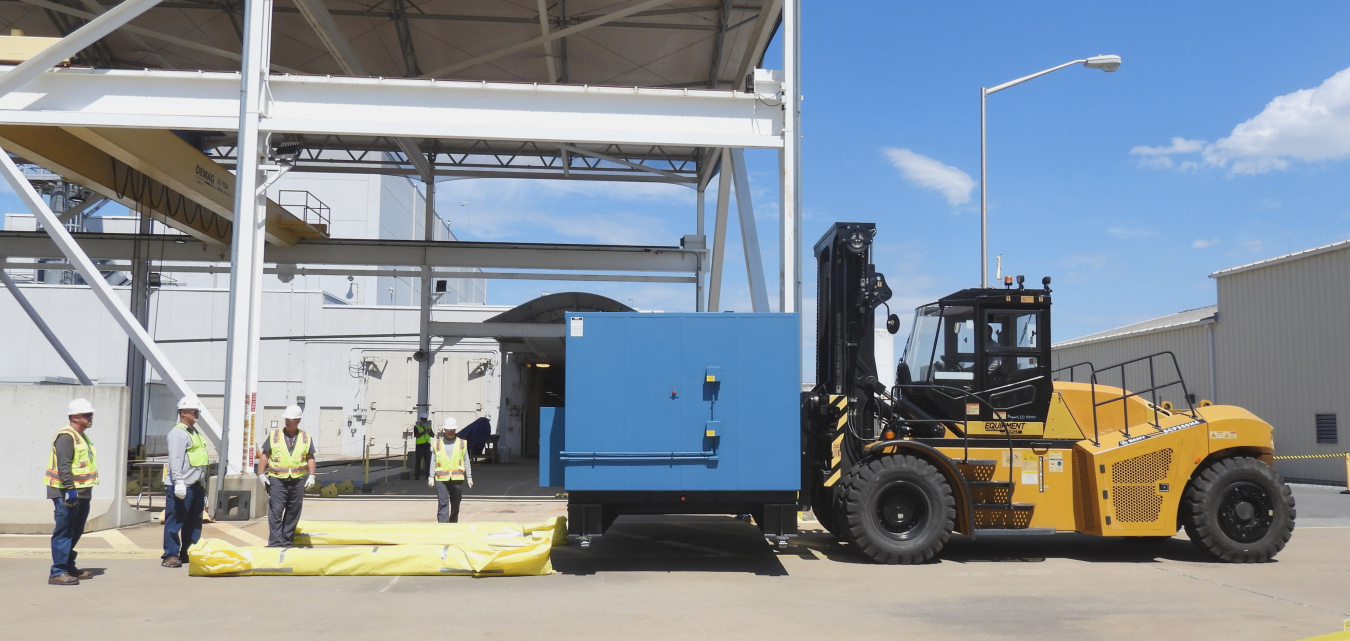DUF6 Improvements
To achieve peak lifecycle oxide shipping throughput for each site a dedicated facility is being constructed to meet these needs. The selected location for construction does not affect the current conversion and shipping operations but is located near the cylinder yards and existing railways. Portsmouth and Paducah are currently executing site preparation and planning for full construction of the uranium oxide shipping facility.
The DUF6 Conversion Project team recognized a potential process throughput improvement and long-term cost savings by changing the method in which DUF6 cylinders are currently heeled (final cylinder evacuation). The current vacuum pumps used for final cylinder evacuation have a high failure rate and are costly to repair or replace. The improved cylinder evacuation header (EVH) system will allow processed cylinders to be heeled (evacuated) to minimize the amount of remaining DUF6 to an acceptable level. To remove the final contents from the vaporization process, the cylinders will be evacuated to a low temperature cylinder in the EVH system. Once the EVH cylinders are full, the EVH cylinders will be fed through the conversion facility. This improvement is expected to improve throughput by approximately 15% resulting in a reduction of processing time of 3-4 hours per cylinder.
Currently, the HF transfer line serves as the primary pathway for directing HF flow to the hydrofluoric acid storage system. This transfer line is monitored for leaks via HF detection system. A loss of power to the transfer line blower results in potential safety concerns, operational downtime and requires timely notification to the DOE. To decrease these risks and increase throughput, DUF6 facilities have placed the HF transfer line blowers on an uninterruptible power supply to ensure continuous operation by avoiding power interruptions.



